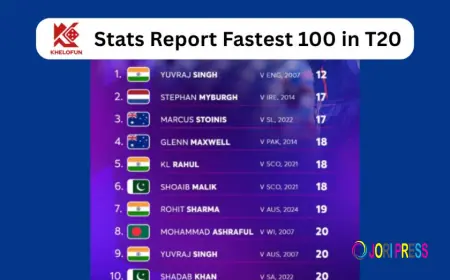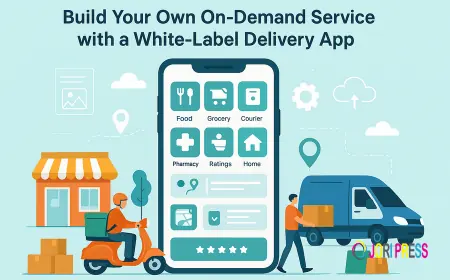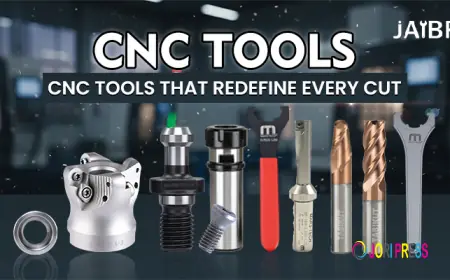E-commerce Website Development: Building Online Stores That Match Real Customer Behavior
E-commerce website development is the structured process of building an online store that helps businesses sell products or services in a smooth, reliable, and user-friendly way. It includes planning the site architecture, designing an easy shopping experience, integrating secure payment gateways, setting up product management systems, and ensuring the platform can handle real-time traffic and transactions without errors.

E-commerce website development has become essential for businesses, yet many online stores still struggle with the basics: slow loading pages, unclear product information, poor mobile experience, and complicated checkout steps. These issues affect user trust and directly impact conversions. In multiple e-commerce performance studies, it was found that more than half of visitors exit before reaching the cart, even when they show interest in the product. This happens because the website is not structured around how users search, compare, and decide. Many stores launch with a good product lineup but lack the technical and structural elements that support smooth navigation and search visibility.
Agitate
These problems grow over time. Users try to view products but cannot filter them properly. Product pages do not provide the information they need, so they hesitate. On mobile, layouts shift, images feel heavy, and buttons are not easy to click. Even small issues—like unclear return details or missing size information—push buyers away.
A case analysis of a mid-scale apparel seller showed that although the store had over 700 SKUs, the bounce rate stayed above 45%, and conversion was stagnant. After a deep review, the biggest issues identified were:
-
Category structure did not match user expectations
-
Page load time exceeded 4 seconds on mobile
-
Filters were inconsistent across categories
-
Checkout required too many steps
-
Product descriptions did not have specifications
The business had traffic, but the website experience did not support users enough to drive sales.
Solution
A structured, user-centered custom e-commerce website development process can solve these issues and build a strong online buying experience. Here is what an effective approach includes:
1. Understand User Intent Before Building Anything
The foundation of a successful online store is understanding:
-
What users search for
-
How they compare products
-
What information influences their decisions
-
Where they drop off
This data shapes the entire site structure, from categories to product content.
2. Build a Logical and Search-Friendly Product Architecture
A strong product catalog supports both users and search engines.
This includes:
-
Organized categories
-
Attribute-based filters
-
Clean internal linking
-
LSI-driven naming conventions
This helps users find products faster and ensures better indexing.
3. Prioritize Mobile-First E-commerce Experience
Most shoppers browse and buy through mobile.
This makes mobile-first optimization essential:
-
Lightweight pages
-
Responsive layout
-
Optimized images
-
Easy tap targets
In one optimization project, reducing mobile page weight improved engagement by 19% in less than a month.
4. Give Users Clear, Helpful Product Information
Product pages should reduce confusion, not add to it. They should include:
-
Purpose of the product
-
Specifications
-
Variants
-
Usage information
-
Size and color details
-
Shipping and return policy
This supports confident decision-making and increases conversion.
5. Offer Smart Search and Relevant Filters
Accurate search results keep users engaged longer.
A strong system includes:
-
Auto suggestions
-
Error-tolerant search
-
Filter combinations
-
Attribute-based sorting
This reduces frustration and increases product discoverability.
6. Create a Smooth and Predictable Checkout Flow
Checkout is where users often leave.
To reduce drop-offs:
-
Limit the number of fields
-
Offer guest checkout
-
Show price breakdown clearly
-
Maintain consistent steps
One retail store improved conversion by 12% after removing two unnecessary checkout fields.
7. Use Real Data for Continuous Improvement
E-commerce growth is ongoing.
Analytics tools help identify:
-
High-exit pages
-
Search terms users enter
-
Cart abandonment reasons
-
Journey bottlenecks
This continuous cycle of improvements creates long-term gains.
Why This Approach Aligns With Google’s Expectations
Search engines reward online stores that:
-
Load fast
-
Provide helpful product content
-
Use clean navigation
-
Are mobile-friendly
-
Maintain structured data
-
Have reliable user signals
Following these principles improves both visibility and engagement.
Conclusion
E-commerce website development is not just the process of building an online store—it is the process of designing a clear, predictable, and helpful buying journey. A strong approach to custom e-commerce website development ensures that every part of the site supports real user behavior, improves product discovery, and removes friction from checkout. When the entire experience works together, engagement increases, trust improves, and sales grow steadily over time.
What's Your Reaction?
 Like
0
Like
0
 Dislike
0
Dislike
0
 Love
0
Love
0
 Funny
0
Funny
0
 Angry
0
Angry
0
 Sad
0
Sad
0
 Wow
0
Wow
0



















































